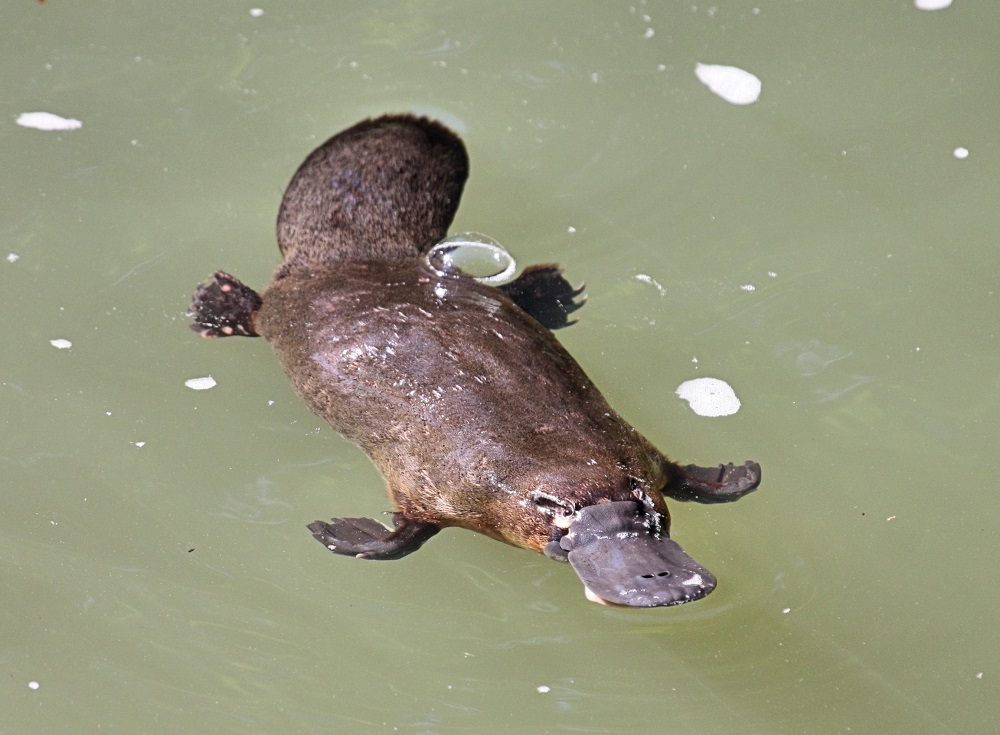 The platypus is an iconic species within Ipswich and measures are being taken to conserve this important native animal.
The platypus is an iconic species within Ipswich and measures are being taken to conserve this important native animal.
The platypus (Ornithorhynchus anatinus) is a unique, egg-laying mammal that causes significant local and international curiosity.
Council has identified the platypus as an iconic species.
A database of sightings and eDNA recordings that helps understand the species within the Ipswich local government area (LGA) has been created in a partnership between council and the Wildlife Preservation Society of Queensland.
Platypus conservation in Queensland is becoming increasingly important following a noticeable decrease in recorded sightings in recent years.
Platypus recovery plan
Council has a Platypus Recovery Plan to ensure the long-term conservation of the species in the LGA and surrounding catchments.
The Platypus Recovery Plan objectives include:
- Identify and stabilise platypus populations in Ipswich
- Increase habitat quality at known sites, and manage existing threats
- Remove in-stream barriers and reduce threats to maintain sink populations
- Identify locations for establishment of new populations and complete necessary habitat improvements
- Create and implement a regular monitoring program for platypus numbers and distribution.
Platypus populations in Ipswich
Council and Wildlife Queensland have monitored platypus populations within the Ipswich LGA between 2015 and 2024. Through this work council is aware of several known locations of platypus within and adjacent to the Ipswich LGA.
These include:
- Sapling Pocket to Kholo Bridge in the mid-Brisbane River
- Woogaroo Creek and Opossum Creek
- Sandy Creek, Camira through to Bullock Head Creek and Wolston Creek (in Brisbane).
Council has some evidence of platypus in several other catchments, but only has anecdotal records or limited eDNA records to support these reports. Without repeated eDNA records or evidence of a sighting, it is difficult to fully determine platypus presence.
This is the case for both Bundamba Creek and Six Mile Creek where both have previous anecdotal records from community members as well as an eDNA record at one or more sites. More surveys are required to confirm the presence of platypus in these catchments.

Why Conserve Platypus
Platypus are an apex predator in their food chain and integral to the biodiversity of many Australian freshwater ecosystems. They have exceptional cultural and evolutionary significance given their unique anatomy and life history. This combination makes platypus an iconic species for promoting sustainable management of the waterways in Ipswich and surrounding areas.
Platypus are renowned across the world and in Ipswich they can be found in urban creek areas. However, their habitat is also fragile, prone to many threats and changes and considerable effort is needed to identify and conserve platypus in these environments.
Platypus are rarely successfully bred in captivity meaning that the conservation of wild populations in existing areas is of critical importance.
Key habitat requirements
Platypus occupy a diverse range of freshwater habitats from shallow, still waters such as lakes through to flowing systems such as creeks and rivers.
There are three main requirements for platypus habitat:
- In-stream complexity. Large woody debris, organic material and complex substrate all increase the total available food resources, while deep pools allow for refuge in drought.
- Banks with dense native riparian vegetation. Streambanks provide burrowing opportunities and shelter for platypus. Banks have to be stable and be made of material suitable for creation of dens. Intact riparian vegetation increases habitat suitability, maintains water quality and increases bank stability.
- Connectivity. The ability for platypus to travel upstream and downstream supports healthier populations. Waterway barriers such as concrete channels, culverts and weirs increase vulnerability to predation.
Current Threats
- Habitat degradation: Declining water quality caused by urban land use and development is a key contributor to degradation of water quality and in-stream habitat condition.
- Instability of riverbanks: Platypus are dependent upon stable streambanks. Vegetation clearing, riparian weeds and erosion can destabilise streambanks. Channel sedimentation resulting from bank erosion also impacts deep pool habitats.
- Improper fishing equipment: Recreational fishing equipment, especially opera house or funnel yabby traps, has been responsible for significant platypus deaths in eastern Australia. The Queensland Department of Agriculture and fisheries now enforce strict conditions on recreational funnel traps that can be used in the Ipswich LGA, and can be viewed here; https://www.qld.gov.au/recreation/activities/boating-fishing/rec-fishing/rules/equipment.
- Introduced predators. Platypus have few natural predators in their habitat. However a number of introduced species are impacting platypus populations, such as domestic and wild cats and dogs and foxes.
How You Can Help Platypus
There are many ways we can all contribute to the conservation of platypus across Ipswich. Ways you can help include:
- Become familiar with Queensland's recreational fishing rules and regulations, and do not use opera house style funnel traps
- Keep pet cats and dogs safely secured at night, and always keep your dog on a leash when walking along waterways
- Be involved with projects that improve waterway health, such as a local Bushcare group
- Clean up rubbish around waterways, especially ringed items such as drink packaging, rubber bands and hair ties
- Dispose of green waste appropriately and never dump waste in reserves, natural areas or along waterway corridors
- Plant natives in the garden – Ipswich residents can receive free native plants from council’s Nursery.
- If you live on a creek in a rural area, establish off-stream watering points and minimise stock access to fragile streambanks
- Minimise fertiliser and herbicide use in the garden
If you find a sick or injured Platypus
Pick up and hold a platypus safely by the tail to avoid the male's venomous spurs. Place it in a light cloth bag such as a pillowcase or a secure container, keep it cool and quiet and contact RSPCA Queensland on 1300 264 625.